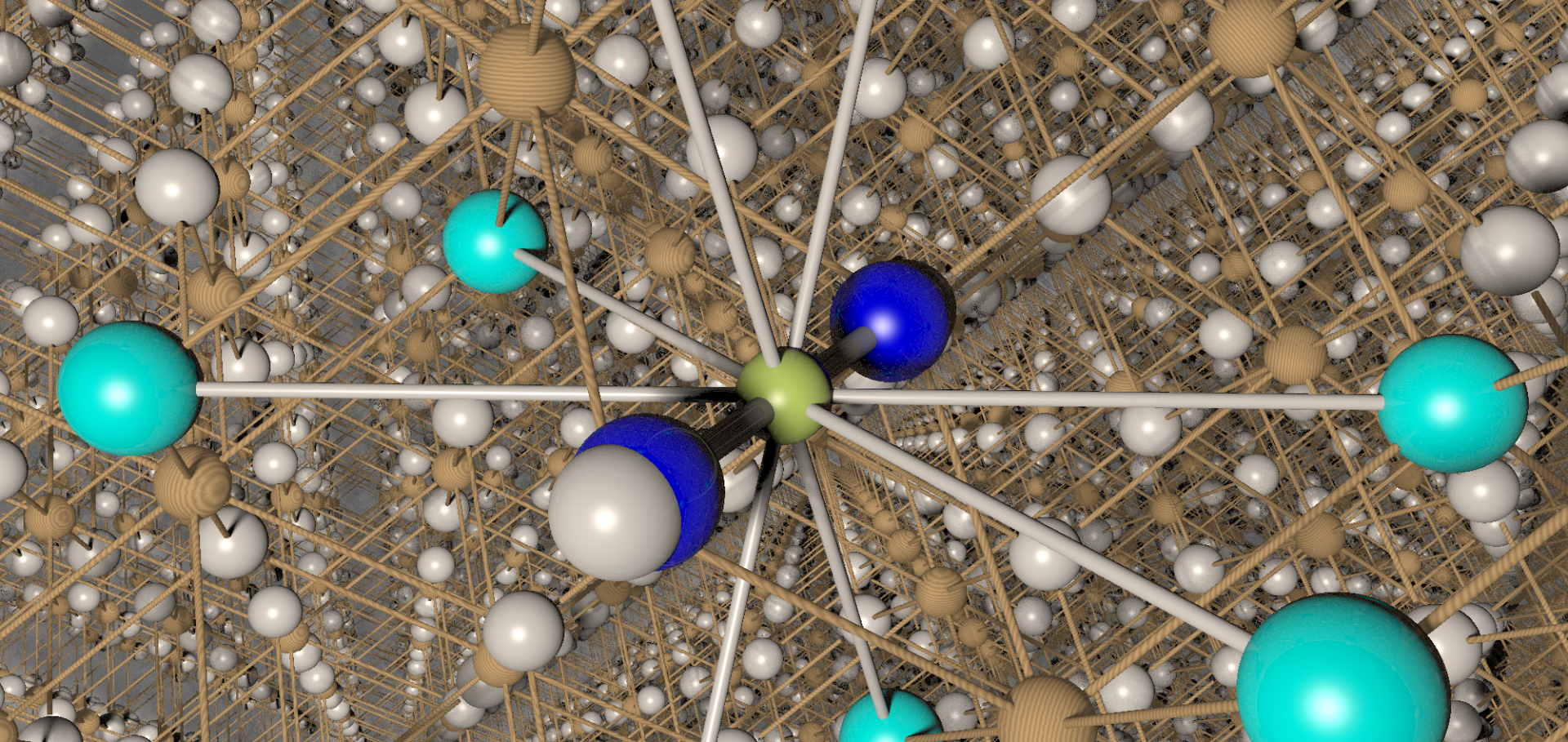A mu SR study of the spin dynamics in Ir-diluted layered manganites
PHYSICA B 326:1-4 (2003) 513-517
Abstract:
Dilution on the B-site with Ir or Rh can lead to the enhancement of ferromagnetic couplings in layered manganites. We report a muSR study of the spin dynamics of the layered manganites La0.25Sr1.75MnpIr1-pO4 (p = 0.5, 0.75) as a function of the dilution. We have characterized the static magnetic behavior using SQUID magnetic measurements and used muon spin relaxation spectroscopy to provide evidence for short-range ferromagnetic correlations. Furthermore, the effect of dilution on the critical dynamics in this two-dimensional spin system is reported and related to the dynamics above and below the critical percolation threshold. (C) 2002 Elsevier Science B.V. All rights reserved.Angle-dependent vortex structure in a high anisotropy superconductor
PHYSICA B 326:1-4 (2003) 374-377
Abstract:
Angle-dependent muon spin rotation measurements have been made on the organic superconductor kappa-(BEDT-TTF)(2)Cu(SCN)(2). Oscillations are observed in the width of the internal field distribution, which are periodic in the perpendicular component of the applied magnetic field, B-z = B cos theta, with a uniform period over a range of angles and fields. These oscillations are superimposed on the standard cos theta scaling expected for the width in a highly anisotropic superconductor. The oscillation period is of order 2 mT and the amplitude is particularly strong at fields comparable with the period. The origin of this novel phenomenon is discussed in terms of the low field instabilities of tilted vortices in this highly anisotropic superconductor. (C) 2002 Elsevier Science B.V. All rights reserved.Changes of the spin dynamics in perovskite and bilayer manganite
PHYSICA B 326:1-4 (2003) 500-504
Abstract:
We report a series of muSR measurements performed on single crystals of La1-x,SrxMnO3, (0 less than or equal to x less than or equal to 0.125) and on a polycrystalline bilayer manganite La2-2x Sr1+2xMn2O7 (v = 0.52). We find that the temperature dependence of the spinlattice relaxation rate is strongl, dependent on the hole doping and the associated changes in the magnetic structure. Y The systems have competing, anisotropic interactions, leading to a complex interplay of charge, spin and orbital order. This has a significant influence on the spin dynamics, both for perovskite and layered manganites. (C) 2002 Elsevier Science B.V. All rights reserved.Magnetism in oxide chains bridged with the hydride anion: LaSrCoO3H0.7 studied using muon-spin rotation
PHYSICA B 326:1-4 (2003) 527-531
Abstract:
The transition metal oxide hydride, LaSrCO3H0.7, adopts an unprecedented structure in which oxide chains are bridged by hydride anion's to form a two-dimensional extended network in which magnetic ordering is found up to at least 350 K. Muon-spin rotation has been used to demonstrate that this material is uniformly magnetically ordered throughout its bulk. Our results are compared with those on Sr2CuO3 and Ca2CuO3 which adopt a similar oxide chain structure and we demonstrate the crucial role of the bridging hydride ions. (C) 2002 Elsevier Science B.V. All rights reserved.New science with pulsed muons - development ideas at ISIS
PHYSICA B 326:1-4 (2003) 260-264


